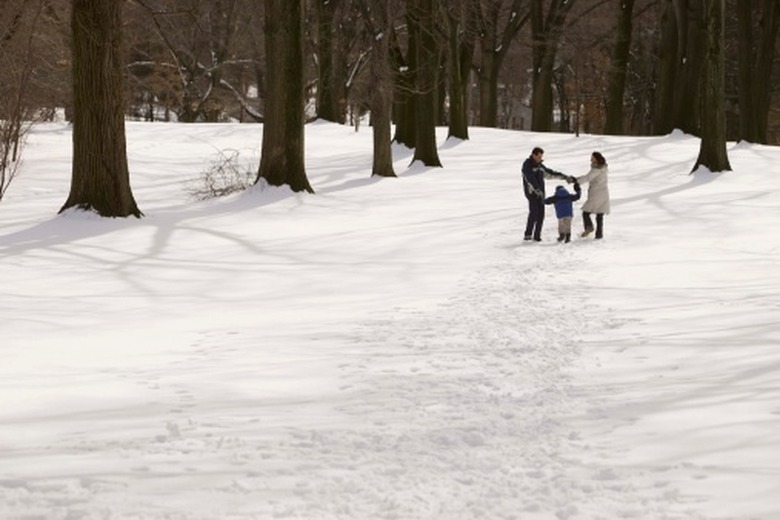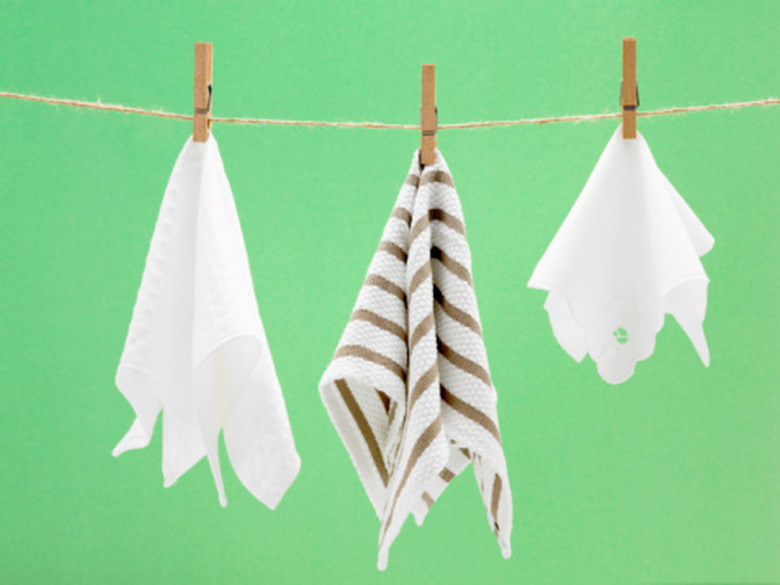Easy & Simple Science Projects On Matter For Kids
When experimenting with states of matter, keep the work simple and the explanations simpler. Children intuitively understand that matter comes in liquid and solid forms, but younger children will need some evidence that gas is composed of matter. Most kids do not realize that matter can change its state. Demonstrate how this transformation happens by boiling and freezing water, and then move on to other experiments. Make sure you explain what is happening as it occurs.
Liquid to Solid
Liquid to Solid
The most straightforward way to show kids that liquids change into solids is by freezing water. The experiment is less than scintillating but it has the advantage of being a process that is familiar to them. For a bit of a kick, show them that a liquid (i.e., a cup of half and half mixed with a little sugar and vanilla) will turn into ice cream if you seal it in a zippered bag and agitate it inside of a larger zippered bag filled with salted ice. More advanced students will note that the salt lowers the freezing point of the water. Churning heavy cream (a marble in a canning jar works well, but be careful that none of the glass cracks or breaks during the agitation) separates the buttermilk from the butter. While this is a different process, it ends with a solid created through the action of the churning on the fat.
Solid to Liquid
Solid to Liquid
Melting a cup of snow and predicting where the water level will fall is a fun way to conduct a melting experiment. You can also experiment by letting ice melt under different conditions. Melt equal weights of crushed and cubed ice to explore properties of surface area. Melt plain and salted ice cubes to show how introducing sodium changes the freezing point of the liquid. Put a sealed bag of ice under a weight (such as a pile of textbooks) to show the effects of pressure on the transformation of solids to liquids.
Gas to Liquid, Liquid to Gas
Gas to Liquid, Liquid to Gas
Evaporation and condensation are easy to observe in a home or school environment. Have kids draw smiling faces on the bathroom mirror after the room has been filled with steam or set out water in a transparent bowl and mark the evaporation line every few days with tape or window markers. Dampen paper towels with water and rubbing alcohol, and then hang them from a line so kids can observe how different kinds of matter evaporate at different rates. Heat a pot of water to the boiling point to create water vapor and demonstrate how the same kind of matter can evaporate at different rates depending on the energy level introduced.
Advanced but Easy
Advanced but Easy
Once your kids understand the nature of the states of matter, mix it up a bit. Show them two examples of matter that show properties of two states.
Make "Gluep" by carefully mixing one teaspoon of laundry borax into five tablespoons of warm water, and then separately mixing one tablespoon of white glue and one tablespoon of water. Stir two teaspoons of the borax mixture you just created into the entire glue mixture, and then knead. The resulting plastic material will have properties of both solids and liquids.
You can use the polymer quality of cornstarch in the same way. Mix cornstarch with enough water to make a smooth flow (too much water will ruin the effect). When the mixture is slowly moved or poured it acts as a liquid, but a quick interaction (like a punch to the surface) will make it behave like a solid. You can even walk on large vats of the mixture as long as you keep up a brisk pace.
Cite This Article
MLA
Powell, Marie. "Easy & Simple Science Projects On Matter For Kids" sciencing.com, https://www.sciencing.com/easy-science-projects-matter-kids-8302266/. 24 April 2017.
APA
Powell, Marie. (2017, April 24). Easy & Simple Science Projects On Matter For Kids. sciencing.com. Retrieved from https://www.sciencing.com/easy-science-projects-matter-kids-8302266/
Chicago
Powell, Marie. Easy & Simple Science Projects On Matter For Kids last modified August 30, 2022. https://www.sciencing.com/easy-science-projects-matter-kids-8302266/




